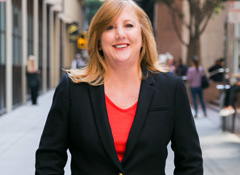Nissan’s Stuart Jackson: ‘Tell a story well and it will fly’
Stuart Jackson, Nissan’s VP of comms, tells Gorkana about the lessons that have stayed with him since helping to launch the joint venture between Orange and T-Mobile in 2012 and explains why he co-authored The 4G Mobile Revolution: Creation, Innovation and Transformation at EE.
Since its launch in 2012, EE has won multiple uSwitch awards as the fastest UK network and comes up top as the fastest mobile operator in this year’s Rootmetrics bi-annual stress test.
After the high-profile Orange/T-Mobile merger, and EE’s sale to BT in 2015, Olaf Swantee, former CEO at EE and co-author of The 4G Mobile Revolution…, approached Stuart Jackson, former communications director at EE, to help tell this success story. The duo spent 18 months developing the copy and chasing a publishing deal. The final proofs were signed off last week (30 May) and the book is set to be published in August.
Jackson describes how his experience at EE taught him to be bold, how comms became a powerful tool and the differences between working in comms for the telecoms and automotive industry.
How did the concept of the book emerge and what’s interesting about EE and your time there as comms director?
The book was really an opportunity for us to reflect on how a great team took two of Britain’s biggest brands, Orange and T-Mobile, and created something totally new and unexpected.
I have very fond memories of that time, but writing the book reminded me just how tough it was too. Delivering real transformative business success is not an easy ride. It was a combination of smart thinking, very hard work and a little bit of luck here and there.
It was a potent mix of great ideas, a can-do spirit and expert leaders, enabling a group of individuals to experience something most people never get to do in their working lives … to play their part in creating a new business, a new brand and all the incredible learnings and experience that goes with that.
What lessons did you learn during this time about brand-building and communicating new services and offerings for both a corporate and consumer audience?
Often, when people think ‘brand’ they think ‘logo’. But a brand is so much more than that. It’s a promise. It’s the very essence of your company and forms the basis of an emotional contract between you and your customers. It’s the reason they choose you over the competition and the reason they stick with you, even when things go wrong.
A key lesson we took from EE was that a new brand needs to have product differentiation at its heart if it is to succeed. In EE’s case, that was 4G.
What’s your biggest take-away from your time at EE?
Be bold. We came up with a phrase and a belief that has stuck with me through all subsequent jobs – “never go soft”.
There are too many soft launches and trials out there. Too many businesses don’t just get on and do it. Just get out there and deliver as a business with communications spearheading that movement.
With the right support and engagement of a CEO, communications can be the most powerful tool in a business’ armoury. That’s where we got to with EE. We used communications to power up the business and act as a lever to create an agile business with an impactful story that the competition couldn’t keep up with.
You’ve made the jump from working in the telecoms sector to automotive, what are the similarities (and differences) between the two?
The difference has to be the product lead-time involved. In telecoms, you can have a device go from a sketch on a piece of paper and into the stores in under nine months. You can change a tariff in under six weeks. When you’re making a car, that process is in years.
On average it takes half a decade to get a car from drawing board to forecourt, and there is significantly more investment made upfront – and that means more risk if something goes wrong. The communications cycles are equally matched.
In the automotive world, we’ll be talking to media about a specific model 18 months before it’s available to buy, whereas we’d leave it as late as possible to announce our new plans in telecoms. All that said, the general rule of communications is the same … It’s all about the story. If you’ve got a good story, it doesn’t matter what sector you’re in. Tell it well and it will fly.
- Kogan Page publishes The 4G Mobile Revolution: Creation, Innovation and Transformation at EE on August 3.





